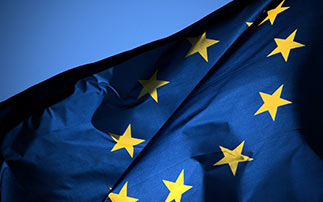1. Getting to know the Life+ program
Before embarking on a project, it’s essential to understand how the Life+ program works. This European scheme aims to support environmental and climate projects with a concrete, sustainable impact.
It is divided into two sub-programs:
- Environment: focusing on nature protection, biodiversity, quality of life, waste and resource management;
- Climate Action: aimed at reducing greenhouse gas emissions, adapting to climate change and promoting renewable energy sources.
To be eligible for Life+ funding, your project must meet these objectives and be in line with the program’s priorities and expectations. It is therefore essential to regularly consult the calls for proposals and guidelines published by the European Commission.
2. Defining the project’s scope
a) Identify a real and relevant need
To begin with, you need to identify a need or an environmental or climatic problem that your Life+ project intends to resolve. This need must be in line with the program’s concerns, but also reflect local or regional realities and issues.
b) Setting clear, measurable objectives
Once this need has been identified, you need to formulate the specific objectives that your Life+ project aims to achieve. These objectives will be used to guide your actions and evaluate the impact and results achieved. They must be concrete, relevant and measurable, in order to demonstrate the usefulness and added value of your project compared with existing solutions.
c) Analyze potential obstacles
A Life+ project is not without its challenges. It’s important to anticipate the technical, regulatory, financial or even social obstacles you may encounter in implementing your initiative. This analysis will enable you to put in place adaptation strategies and plan the resources needed to overcome these difficulties.
3. Building a solid partnership
The success of a Life+ project depends largely on the quality of the partnership you establish. That’s why it’s crucial to select competent, committed partners from associations, institutions, the scientific community and the private sector.
These players will contribute their expertise, skills and resources to enrich your project and ensure its sustainability. Good coordination between the various stakeholders and fluid communication will be essential to guarantee the effectiveness and coherence of the actions undertaken.
4. Prepare and submit a solid application file
a) Drawing up the application form
In this crucial stage, you’ll need to carefully fill in the form provided by the European Commission. This document must present the following elements clearly and precisely:
- General description: summary presentation of the project, its objectives, beneficiaries and geographical scope;
- Methodology: detailed explanation of the actions to be implemented, the resources mobilized and the monitoring and evaluation indicators;
- Expected results: quantified demonstration of the project’s positive environmental and social impact;
- Financing plan: estimated project costs, sources of funding and financial management methods;
- Appendices: technical, cartographic, administrative or financial documents in support of the application.
b) Submitting the application to the relevant authorities
Once your application has been finalized and validated by all project partners, all that remains is to submit it to the relevant national and European authorities within the specified deadlines. It is essential to meet these deadlines, as no application will be accepted after the deadline.
The evaluation process can take several months, and is based on criteria such as the relevance of the objectives, innovation, technical quality and financial viability of the project. Successful applicants are notified by post and receive funding of up to 60% of the total eligible cost.
5. Implementing the Life+ project
a) Planning concrete actions
Once your project has been selected and financed, it’s time to take action! To do this, you’ll need to draw up a precise schedule for the various stages of implementation, in line with the partners and the objectives set.
b) Regular follow-up
Throughout the life of your Life+ project, regular monitoring should be carried out to ensure that the actions carried out are in line with what was planned, and that they are producing the expected results. Coordination meetings, progress reports and internal evaluations can be organized to ensure proper project management.
c) Communicating your Life+ project
To ensure the sustainability of your initiative and attract the attention of politicians and the general public, it’s essential to put in place an effective communication strategy. This will enable you to disseminate the good practices developed by your Life+ project and increase its visibility at local, national and even European level.
In short, setting up a Life+ project requires meticulous preparation and close collaboration between the various players involved. Following these steps will help you maximize your chances of success and make a significant contribution to the environmental and climate challenges of our time.


